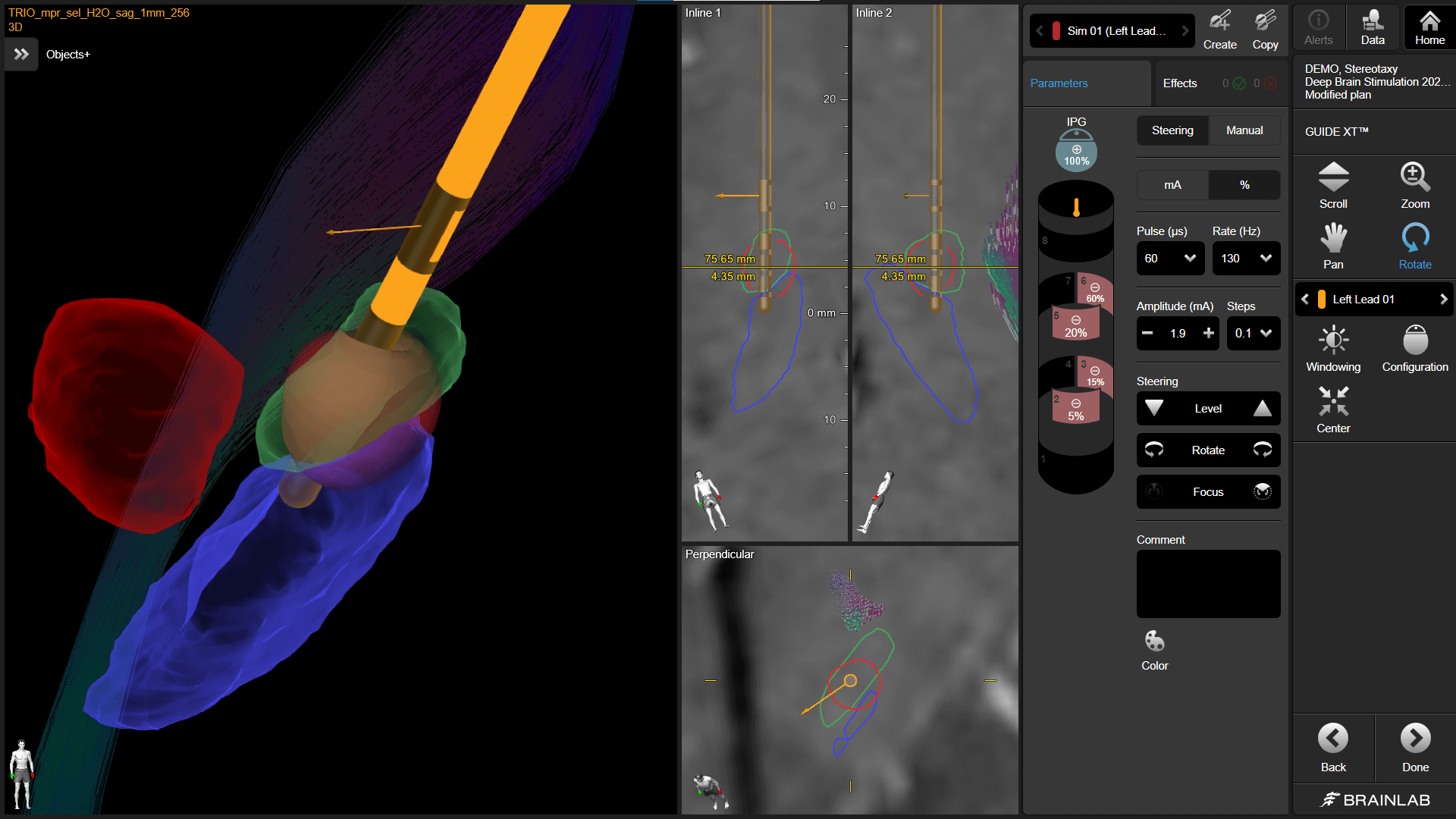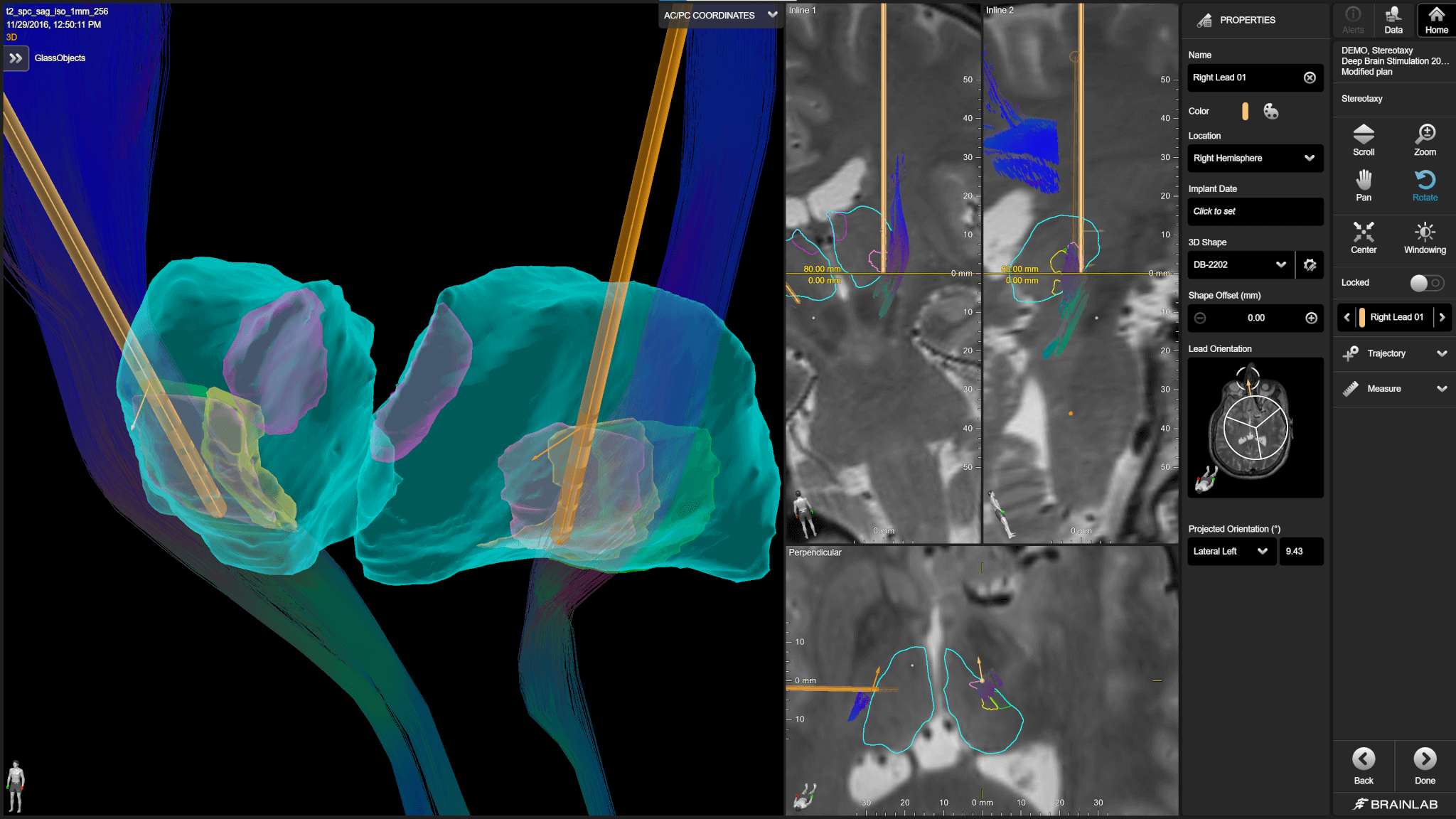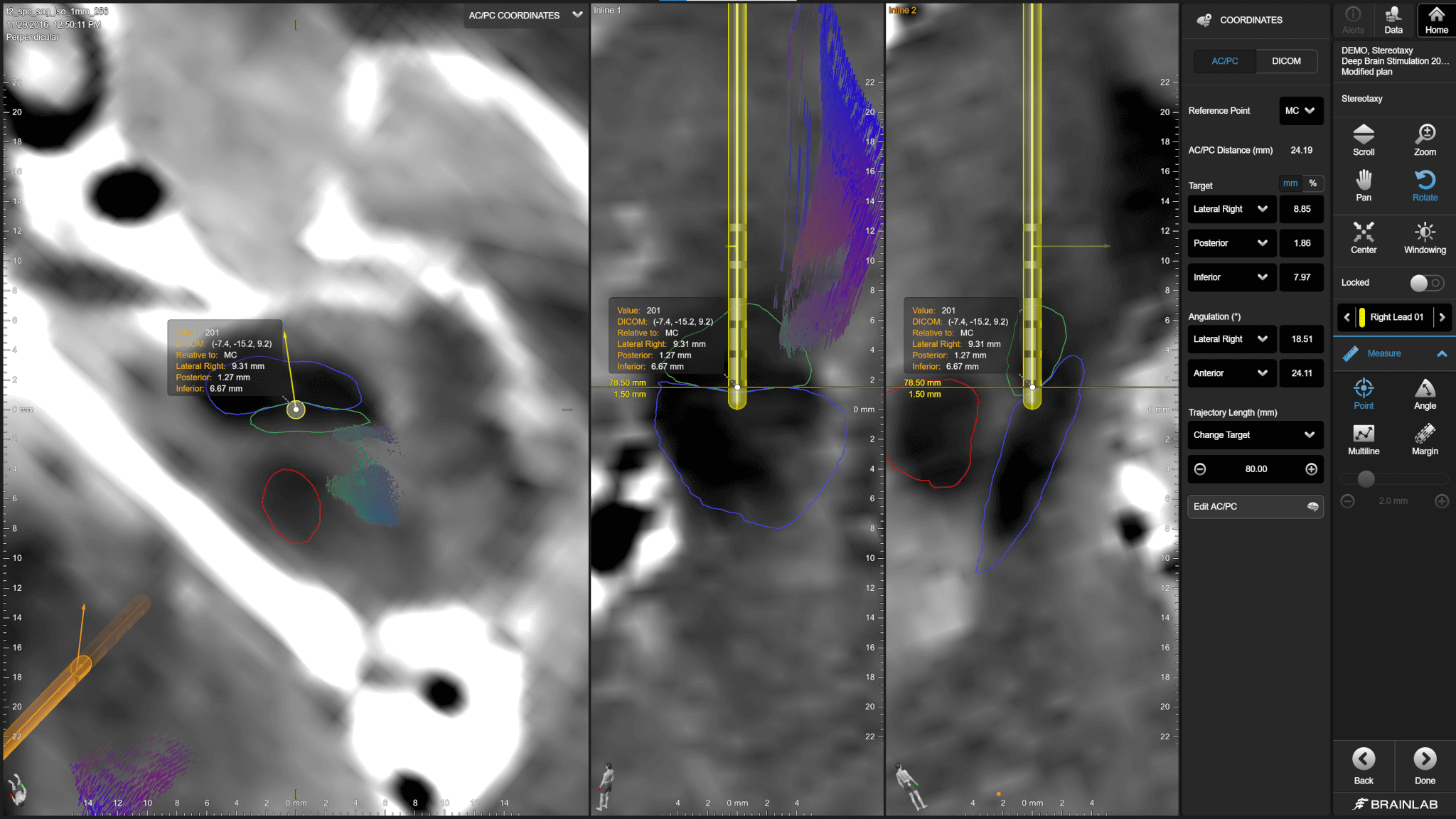Brainlab deep brain stimulation solutions are designed to help clinical teams throughout the entire patient treatment process. By providing advanced 3D visualization of patient anatomy, these software and hardware solutions support users in planning trajectories, supporting frame localization or third-party lead implantation systems, defining stimulation settings as well as intraoperative lead placement verification.

Hear from key opinion leaders in the field
See how you can elevate surgery at every step.
Brainlab DBS workflow
Preoperative planning
Benefit from one integrated clinical software suite and utilize advanced planning features in a seamless, unified environment. Elements planning can also be brought into third-party DBS lead implantation systems with DICOM burned-in export.
Anatomy segmentation for every patient
Segment target and avoidance structures including fiber tracts.
Elements Object Management1 and Elements Fibertracking
Case-specific implant modeling
Model the chosen DBS lead for enhanced visualization of the planned lead in the context of patient’s anatomy.
Elements Stereotaxy and Elements Trajectory Planning Cranial.
Trajectory planning applied to lead implantation workflows
One unified environment supports your DBS lead implantation method, utilizing built in frame-based stereotactic localization and STarFix™ Integration as well as DICOM burned-in transfer to third-party systems.
Elements Stereotaxy, Elements Trajectory Planning Cranial, Elements Import/Export.
Intraoperative guidance
Brainlab is setting a new standard in stereotactic image guided surgery with Loop-X, the first robotic mobile intraoperative 2D/3D imaging system.

Consistent ease of use and access to patient
When it comes to cone-beam computed tomography (CBCT) solutions, Loop-X has the largest bore size on the market, making it easy to test and monitor patients at any time before, during and after surgery. Due to its non-isocentric imaging, patients are always the focal point and do not need to be positioned at the center of the gantry.
Fast and accurate stereotactic frame localization
Loop-X can acquire stereotactic frame localizer scans right at the intervention site, eliminating the need for the patient to be transferred to another room during functional neurosurgery procedures. In addition, the image quality and scan volume provided by Loop-X combined with Elements Stereotaxy enable users to perform accurate localization.
Time efficiency and accuracy in the O.R.
The advanced mobile imaging technology from Loop-X enables medical professionals to perform real-time accuracy checks by using 3D spins or 2D shots to view implanted leads and electrodes. The robotic functionality of Loop-X stores each imaging position which facilitates fast and automated re-acquisition of control images.
Postoperative image guided programming
Benefit from a streamlined preoperative and postoperative workflow.

Overlay implanted leads on preoperative plans
See the DBS lead position in the context of the patient’s anatomy to support your patient programming. Elements Lead Localization automatically detects the DBS lead position and estimates the orientation of directional leads (orientation estimation is only available with Boston Scientific lead models) from postop CT.
Plan DBS settings & streamline patient programming
Guide™ XT unlocks the full potential of Image Guided Programming by enabling the visualization of stimulation field models (SFMs) in the context of a patient’s anatomy. This can significantly reduce programming time, as stated by Lange et al. (2021)2 by letting programming clinicians plan stimulation parameters before visiting the patient.
Clinicians can also bring the power of Brainlab Elements patient-specific visualization into the world of patient programming with Image Guided Programming and seamlessly bridge surgical workflows into image guided programming with Vercise Cartesia™ Directional leads.
Visualize clinical plans in 3D
The Brainlab Mixed Reality Viewer combined with the Magic Leap 23 spatial computing device provide 3D visualization of functional neurosurgery clinical plans and postoperative outcomes that include patient-specific anatomical objects and white matter tractography, 3D lead models and stimulation field models.
Learn more in our webinar,
“Image Guided Planning & Referral Network Improvement”
Sign up now,
see the future of medtech later
Our innovative surgical solutions are just one click away.
Not yet commercially available in several countries. Please contact your sales representative.
https://pubmed.ncbi.nlm.nih.gov/34819915/
Not yet commercially available in several countries. Please contact your sales representative.


